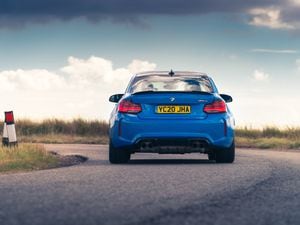What happens when I start my petrol car?
It’s something many people do every day, but what actually goes on when you turn the key?

Starting a car is something thousands of people do each day. Up and down the country, drivers get their vehicles going at the turn of a key, setting off without a moment’s thought about how their car has actually got going.
It’s something most people take for granted. But what actually happens when you turn the key? Let’s take a look.
So when I turn the key, what actually happens?
Put your key into the ignition, turn and – ta-dah! – the engine starts. But what has happened here? Essentially, turning the ignition has closed a circuit between the car’s battery and its starter motor, which is crucial for getting the engine going.
But what is a starter motor?
It’s all in a name – the starter motor is a component that translates electrical energy (from the battery) into mechanical energy at the engine. It’s connected to the engine’s flywheel and, when activated, kick starts the combustion process and allows the engine to get going. It does this by providing the ‘turning’ force to the crankshaft.
This is why many cars struggle to get going if they have an old or weak battery; a lack of energy will mean that the starter motor can’t get the engine going which, in turn, will cause it to fail to start.
Once the engine has got going, the starter motor then stops and allows the motor to take over.
So what happens next?

>
Now the combustion process has started, things really get lively. Inside the engine sits cylinders, within which moves the pistons. Four cylinders are common on most everyday cars, but you’ll find more cylinders on more powerful cars.
The piston is essentially the main vehicle for energy and motion within the engine. It draws a mixture of fuel and air down through the cylinder on its downwards stroke and then compresses it as it moves back up the cylinder. Here, it meets the spark plug.
But what does the spark plug do?

>
The spark plug does just that – provide a spark for the engine. As the piston compresses that mixture of air and fuel back up to the top of the cylinder, the spark plug is used to ignite the combination and cause a small explosion – all contained within the cylinder.
So what happens to that explosion?

>
That explosion – or the combustion of the fuel and air – then drives the piston back down the cylinder, in turn performing a circular motion that rotates the crankshaft. Here, all of that energy is converted into a rotary motion which allows this entire process to translate to the wheels.
But are there any exhaust gases?

>
Of course. Once the piston has travelled on its downwards path and converted that energy into motion, it moves back up again and pushes the leftover exhaust gases to the top of the cylinder. Here, an exhaust valve opens and allows it to escape, channelling it out of the engine and through the main exhaust system to the rear of the car.
Is this a slow process?
Not in the slightest. Even a normal car engine will perform over 200 explosions a second with around 50 individual piston strokes performed within each cylinder every second too. All of this is happening underneath your bonnet and allowing your car to move forward.
Is this process different for various engines?
Though we’ve mentioned that different cars have a different number of cylinders, they all follow this same basic process. It’s all based around the piston drawing a mixture of fuel and air into the cylinder, compressing and igniting it, and then exhausting. A six-cylinder car will have six individual pistons operating within six cylinders, just as a four-cylinder car will have four pistons working in four cylinders, hence the name.





